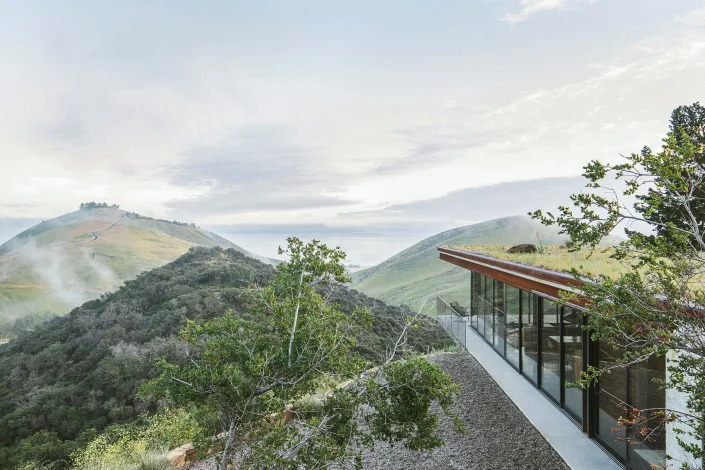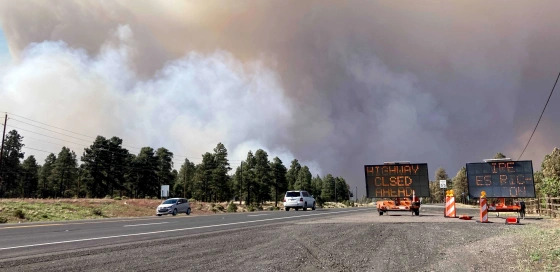Yahoo! Finance
More than 65 million Americans are experiencing ‘severe to exceptional drought’
Grace O’Donnell, Assistant Editor – June 13, 2022
As of May 31, around 90 million Americans were being affected by drought while more than 65 million were experiencing “severe to extreme drought,” according to the National Oceanic and Atmospheric Administration (NOAA).
The Western and Southwestern states are particularly parched — nearly three-quarters of the Western region is in a state of severe to exceptional drought.
“There are a lot of downstream effects when it comes to a drought like this,” Andrew Hoell, a co-lead on the NOAA Drought Task Force, told Yahoo Finance.
Hoell explained that drought isn’t just a matter of precipitation but can be exacerbated by the evaporative effects of higher temperatures and inadequate snowpack runoff in the winter.
“By the time it’s summertime,” he said, “that vegetation is really dry. And if you get a spark, and you get a series of unfortunate events in that regard, you then have wildfires. So when it comes to drought in the West, there are just a variety and a spectrum of effects that you can feel later on whether it’s water resources and fires and reduced agricultural yields. The effects are numerous.”
Depleted water reservoirs and wildfire damage are already taking a toll on residents and businesses. The Hermits Peak Fire, which continues to blaze in New Mexico, has already scorched around 315,830 acres.
Meanwhile, states like California have instituted severe water restrictions, though water consumption has continued to rise. On an even grimmer note, low water levels at Lake Mead have threatened hydropower plants and exposed bodies once submerged in the reservoirs.
While conditions may ease slightly as the region enters its summer monsoon season, the outlook remains dry as the region navigates a historic, multi-decade megadrought.
A number of states including California, Colorado, New Mexico, Utah, Arizona, and tribal nations like the Navajo Nation have all declared drought states of emergency and allocated resources for managing the water crisis.
Population growth
Since 2000, droughts have cost the U.S. around $160.8 billion, according to the NOAA. That figure jumps to $272 billion when accounting for destructive wildfires that are more prone in arid conditions.
With water already becoming more scarce, the increasing population in the West — and therefore demand for water — has inflamed the situation.
An Economic Innovation Group report using county-level population data found that the trend of people moving to water-starved states has only accelerated during the pandemic.
Inland California, the Mountain West, and eastern Texas saw the greatest growth, and overall, 10 of the top 15 counties for population growth were in the Western U.S: Maricopa County, Arizona (Phoenix), was ranked first, followed by Collin County, Texas, and Riverside County, California.
“The map of these demographic shifts shows some familiar pre-pandemic trends and some new patterns,” the author stated. “Overall, the Sunbelt and the Mountain West continued to outshine the rest of the country. Remote rural counties in eastern Oregon and northern Idaho experienced robust population growth while every single county in Nevada gained population.”
Another EIG study found that an additional 20 million residents could move to drought-stricken counties by 2040. Water managers are already balancing razor-thin water budgets at current population levels.
“With reservoirs at record low levels throughout the West and the effects of sustained drought conditions increasingly being felt from agriculture to development, one of the most far-reaching questions in the United States over the coming decades is whether growth trends will ultimately collide with nature’s ability to sustain such a large influx of people,” Daniel Newman, the report’s author, wrote.
Fire and water
Doling out water supplies isn’t the only issue residents have to contend with.
Suburban neighborhoods sprawling out into more rural areas are creating a more substantial wild-urban interface at the same time as the wildfire season creeps earlier and longer.
In the last month, two Colorado Springs neighborhoods were evacuated due to fires, as were the owners of coastal California mansions caught in a blaze. For those unfortunate enough to sustain damage from fires, it can leave lasting financial scars in addition to physical and emotional ones.
“Most people in the Western United States are very underinsured because they base the amount of insurance coverage on the average cost to rebuild” despite higher property costs in some regions like Lake Tahoe, California, Christina Restaino of the University of Nevada Cooperative Extension said in a webinar.
According to Restaino, the current water crisis “underscores the need to prepare communities for wildfire, because when these large emergency incidents occur what we end up having to do is use a ton of water in an already water-scarce environment to suppress wildfires.”
There are some steps residents in high-risk areas can take to protect themselves, however.
“The No. 1 thing that people can do is to create a 5-foot ember-resistant zone around their house, so you don’t want to have anything combustible within five feet around your house,” she said. “Second-easiest thing, I would say, is to screen all of your vents.”
Of equal importance, “be prepared to evacuate,” Restaino stressed. “If you have medications that you take or important things you cannot leave home without, make sure you have backups of all those in an evacuation go-bag.”
While the current period of intense drought may ease in months or years as it has in previous years, rising temperatures due to climate change mean that many will have to get used to living with these risks.
“If I had to guess — and if there is a silver lining here — if we’re to look at the next 10 years, will they necessarily be as bad as the last 10 years in terms of precipitation?” Hoell said. “I would say probably not.”
He added that the primary problem “is the climate has not shown any indication of warming temperatures slowing down. That right there is a problem in and of itself because it changes the amount of snow that you get during the wintertime, changes the amount of snow that then makes its way into reservoirs, thereby replenishing them. So we have these different factors that kind of commingled to bring together this hydrologic situation that is not ideal for us right now.”
Grace is an assistant editor for Yahoo Finance.


















